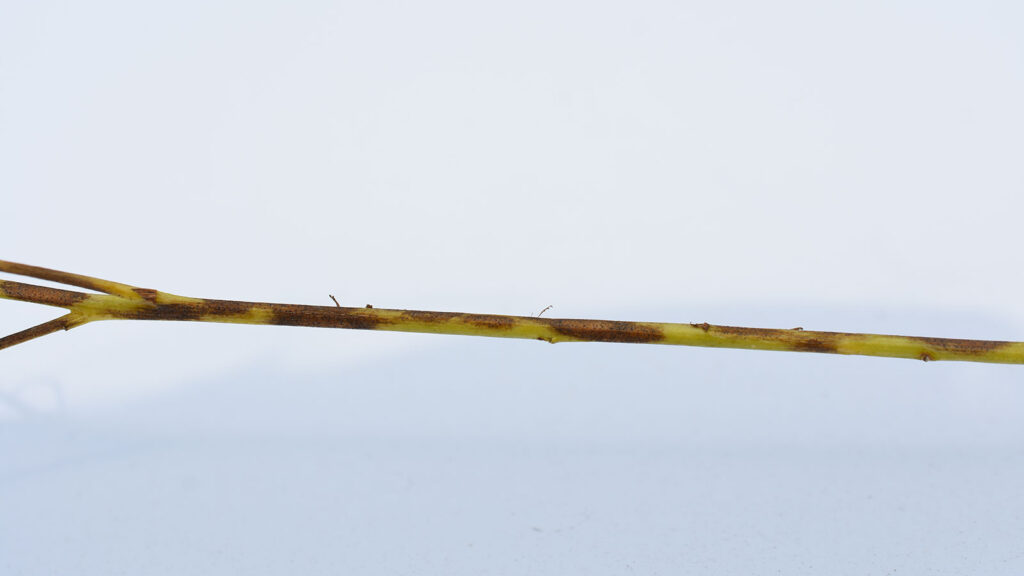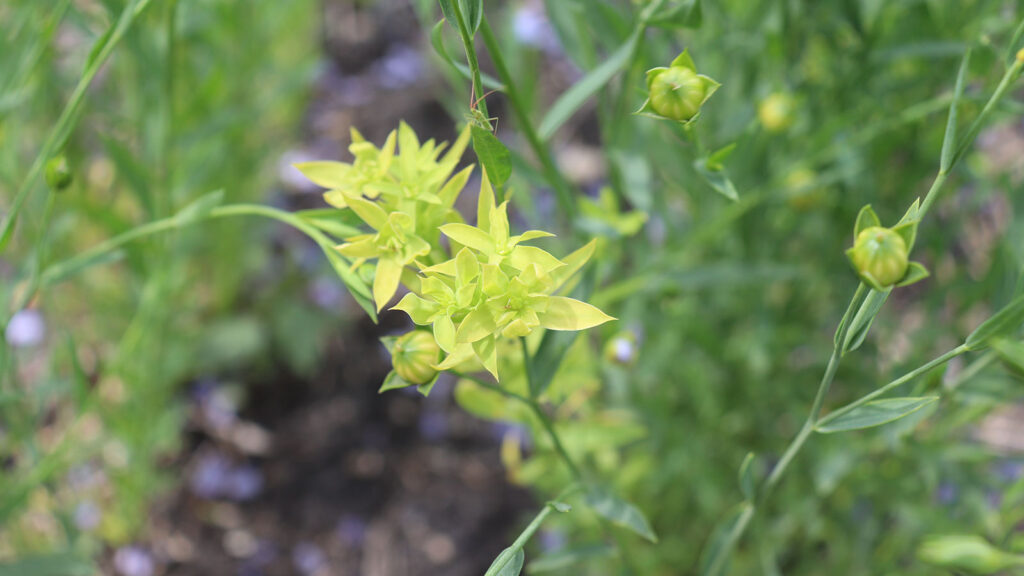Flax Diseases: A 2023 Overview

Pasmo is the primary disease of concern in flax in Manitoba and has a regular seat at the table. Severity ranges from year to year and depends on how early symptoms start to show, but it can have significant effects on yield.
The fungus is both residue- and seed-borne, so best management practices include crop rotation, using clean seed, seeding early and fungicide use, which relies heavily on ideal timing. Keeping fields weed-free is another management practice that also benefits yields via disease prevention. Keeping inter-rows clean enables drying winds to pass through the crop easily and deter fungi or bacteria from setting, but also gets rid of other disease hosts that could enable infection of the crop.
Manitoba Crop Alliance, in partnership with SaskFlax, performs an annual flax disease survey on representative acres in Manitoba. It was uncharacteristically dry in Manitoba in 2023, which led industry members to believe disease pressure would likely be quite low across most crops and mundane disease surveys were to follow.
Pasmo and Aster Yellows were the main diseases of interests this year, but it isn’t yet known how they impacted yield. Pasmo ranged in incidence in-field from 0 – 42 per cent, with severity being as high as 75 per cent in the hardest-hit flax crops. Some flax crops were fortunate to have zero incidence of the disease, most likely due to thinner stands and drier conditions during the season.

Pasmo-infected flax stalk.
Aster Yellows were not significant, but in fields that were affected, it was easy to spot the damage and yield will have been impacted in diseased patches. This is a very random disease, infecting plants that have been fed on by aster leafhoppers that are specifically infected by the aster yellow phytoplasma. Aster yellows affect many different crops, with canola being the most economically significant in Manitoba. Aster leafhoppers are sucking insects that transmit aster yellow phytoplasma directly into the phloem of a healthy flax plant, thereby infecting that plant. Damage is evident in misshapen or unproductive bolls.

Flax aster yellows.
In preparation for the 2024 flax crop, farmers will want to follow some key tips for disease prevention:
- Use clean seed
- Diversify crop rotation
- Use seed treatments
- Keep fields weed-free
For more information on growing flax on the Prairies, see Flax Production Resources on our website.
